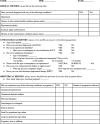Update on sex specific risk factors in cardiovascular disease
- PMID: 38380176
- PMCID: PMC10876862
- DOI: 10.3389/fcvm.2024.1352675
Update on sex specific risk factors in cardiovascular disease
Abstract
Cardiovascular disease (CVD) is the leading cause of death worldwide and accounts for roughly 1 in 5 deaths in the United States. Women in particular face significant disparities in their cardiovascular care when compared to men, both in the diagnosis and treatment of CVD. Sex differences exist in the prevalence and effect of cardiovascular risk factors. For example, women with history of traditional cardiovascular risk factors including hypertension, tobacco use, and diabetes carry a higher risk of major cardiovascular events and mortality when compared to men. These discrepancies in terms of the relative risk of CVD when traditional risk factors are present appear to explain some, but not all, of the observed differences among men and women. Sex-specific cardiovascular disease research-from identification, risk stratification, and treatment-has received increasing recognition in recent years, highlighting the current underestimated association between CVD and a woman's obstetric and reproductive history. In this comprehensive review, sex-specific risk factors unique to women including adverse pregnancy outcomes (APO), such as hypertensive disorders of pregnancy (HDP), gestational diabetes mellitus, preterm delivery, and newborn size for gestational age, as well as premature menarche, menopause and vasomotor symptoms, polycystic ovarian syndrome (PCOS), and infertility will be discussed in full detail and their association with CVD risk. Additional entities including spontaneous coronary artery dissection (SCAD), coronary microvascular disease (CMD), systemic autoimmune disorders, and mental and behavioral health will also be discussed in terms of their prevalence among women and their association with CVD. In this comprehensive review, we will also provide clinicians with a guide to address current knowledge gaps including implementation of a sex-specific patient questionnaire to allow for appropriate risk assessment, stratification, and prevention of CVD in women.
Keywords: adverse pregnancy outcomes; cardiovascular disease; obstetrics and gynecology; pregnancy; reproductive health; sex-specific risk factors; women's cardiovascular health; women's health.
© 2024 Nguyen, Hurwitz, Sullivan, Saad, Kennedy and Sharma.
Conflict of interest statement
The authors declare that the research was conducted in the absence of any commercial or financial relationships that could be construed as a potential conflict of interest.
Figures


References
Publication types
LinkOut - more resources
Full Text Sources

